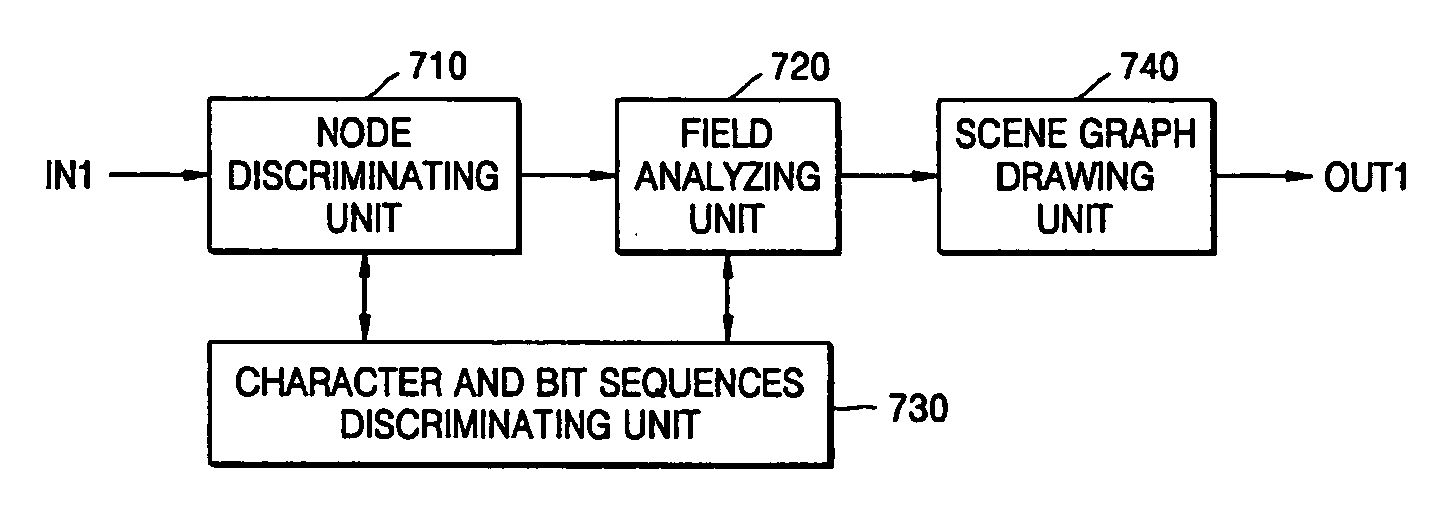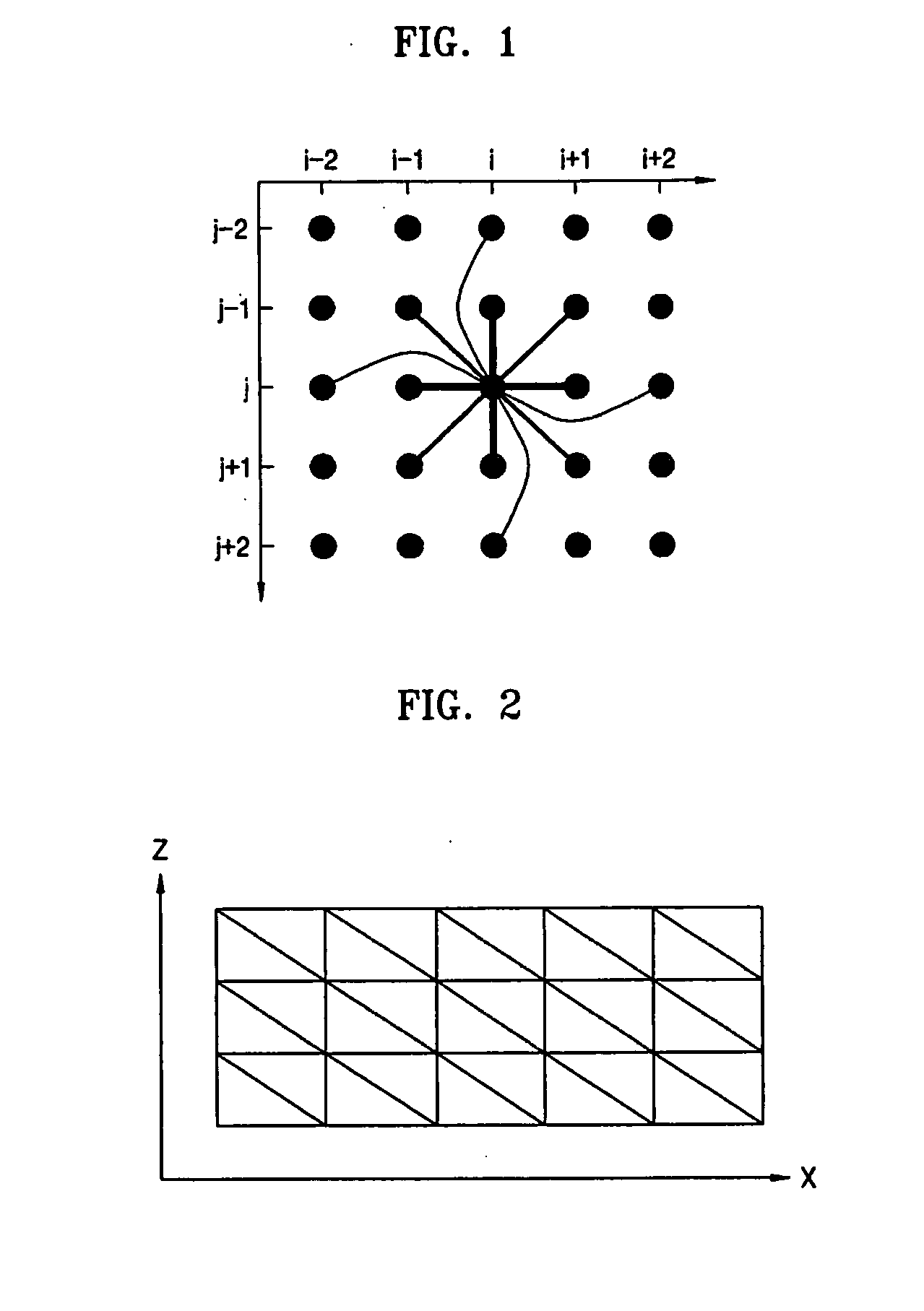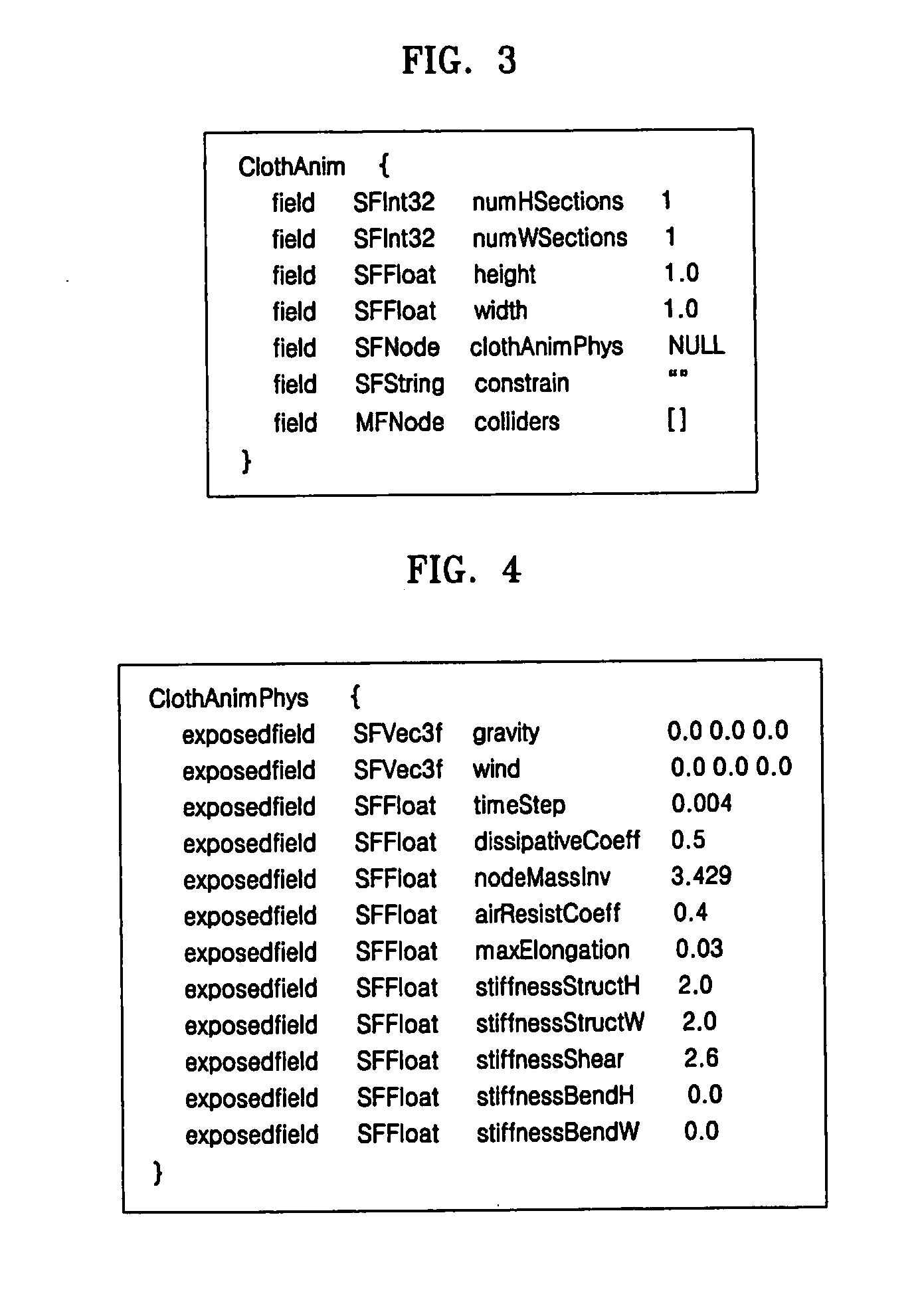Data structure for cloth animation, and apparatus and method for rendering three-dimensional graphics data using the data structure
a data structure and animation technology, applied in the field of three-dimensional graphics data rendering, can solve the problems of difficult for users to write adequate programs, incompatibility between rendering tools and authoring tools, and inability to render and animate general purpose 3d graphics models
- Summary
- Abstract
- Description
- Claims
- Application Information
AI Technical Summary
Benefits of technology
Problems solved by technology
Method used
Image
Examples
Embodiment Construction
[0038] Reference will now be made in detail to the embodiment of the present invention, an example of which is illustrated in the accompanying drawings, wherein like reference numerals refer to the like elements throughout. The embodiment is described below to explain the present invention by referring to the figures. First, a physical model of cloth is set forth. FIG. 1 shows a geometric structure of cloth. Modeling of the cloth takes advantage of a rectangular lattice composed of mass-points, as disclosed in “Deformation Constraints In a Mass-Spring Model to Describe Rigid Cloth Behavior,” by X. Provot, Graphics Interface '95, pp. 147-158. Each mass-point is linked to neighboring mass-points by three different types of springs.
[0039] First, springs which link a mass-point (i, j) to mass-points (i+1, j), (i−1, j), (i, j+1), and (i, j−1), which are the thickest solid lines in FIG. 1, exhibit a frame of the cloth. The springs resist tension within a plane surface of the cloth. Secon...
PUM
 Login to View More
Login to View More Abstract
Description
Claims
Application Information
 Login to View More
Login to View More - R&D
- Intellectual Property
- Life Sciences
- Materials
- Tech Scout
- Unparalleled Data Quality
- Higher Quality Content
- 60% Fewer Hallucinations
Browse by: Latest US Patents, China's latest patents, Technical Efficacy Thesaurus, Application Domain, Technology Topic, Popular Technical Reports.
© 2025 PatSnap. All rights reserved.Legal|Privacy policy|Modern Slavery Act Transparency Statement|Sitemap|About US| Contact US: help@patsnap.com



